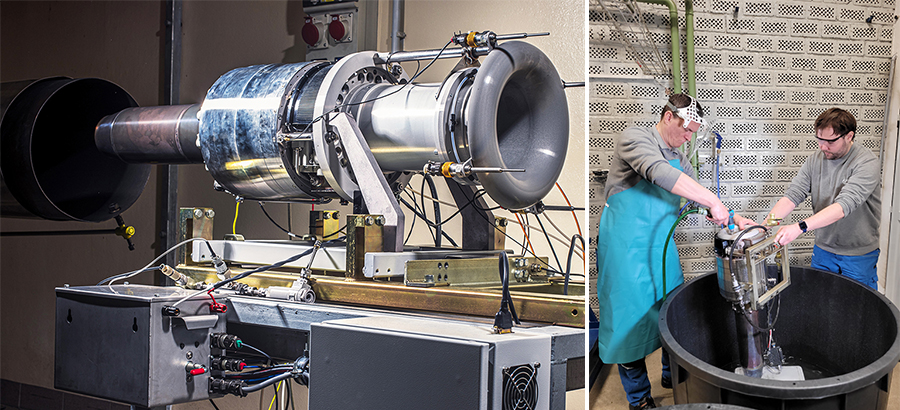PBS Aerospace engineering blog No. 7, Y 2023
Benjamin Whitted
Gas turbine engines are quite versatile devices capable of operating across a variety of environments and conditions. The typical gas turbine jet engine has to be able to output thrust with relatively high efficiency across a range of normal operating conditions. It is common that specialty engines will be designed to operate in specific adverse conditions, such as flight near large bodies of salt water. One thing is common across all of these engines, they have bounds to where they can start, and where they can run. The combination of these bounds form an engine property called the "operational envelope". Those familiar with aircraft design will recognize this term as it is commonly used to refer to similar properties of airframes. In gas turbine jet engines, the operational envelope is a function of temperature, altitude, and Mach number at the inlet of the engine. In the following paragraphs we will explore how these quantities form the operational envelope.
The first thing to note is the airspeed at the inlet of the engine, specifically the Mach number. Gas Turbine Engines cannot efficiently and safely process supersonic flow. Intaking supersonic or near supersonic flow will cause shockwaves in the compressor that will create large pressure imbalances, inefficiently compressing the flow and damaging the compressor. This places a hard ceiling on the airspeed component of the operational profile for any traditional gas turbine jet engine. Obviously, the Mach number is dependent on more than just the airspeed, as the air's density (or pressure), temperature, and altitude play a large role in determining the local speed of sound. That is why it is important to make Mach Number calculations at the extremes of your operational envelope to ensure safe operation.
Altitude is another critical component of the engine's operational profile. Altitude has a significant impact on the local air's density, pressure, and temperature. As air is a crucial part of the combustion process, a jet engine requires a sufficient amount of air to operate, and being that air density decreases as altitude increases, there will be a maximum operating altitude for all air-breathing engines. Exceeding the maximum altitude for engines runs the risk of encountering a "flameout" where the combustion process is halted due to a lack of sufficient oxygen.
The final major factor of the operational envelope is the local air temperature. The temperature of the air external to the engine during operation is important because it has significant impacts on the thermodynamics. The main thermodynamic factor in producing thrust in a jet engine is the difference in energy between the air at the inlet and the exhaust gas. If the local air is too hot, the difference in these values will be decreased and the engine will output less thrust. Also, jet engines are made from several different materials, all of which expand at different rates based on temperature. On the other hand, there is a minimum to how cold the local air can be. The viscosity of the lubricating fluids in an engine are affected by temperature, and will not preserve bearings as well cold. Cold ambient air will lead to colder fuel, affecting the atomization process of the fuel as it goes through the injectors. Ignition devices have to reach a certain temperature to be able to ignite the fuel in the combustion chamber. These are just a few of the affects extreme external temperatures can have on an engine.

It is important to have an understanding of the mission profile of your aircraft, and how that interacts with the operational envelop of the engine used on the platform. This was a high level overview of the factors composing the operational profile, and the effects each of them can have on the engine. If you would like to discuss the specifics of PBS Aerospace's Engines, and determine which engine best fits your application, we would be happy to help you.
